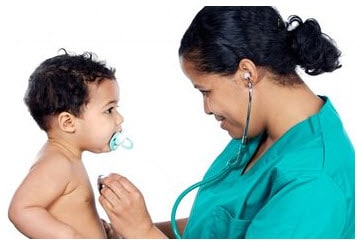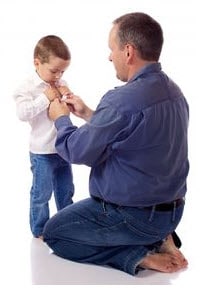Autism spectrum disorder (ASD) is a developmental disability that can cause significant social, communication and behavioral challenges. There is often nothing about how people with ASD look that sets them apart from other people, but people with ASD may communicate, interact, behave, and learn in ways that are different from most other people. The learning, thinking, and problem-solving abilities of people with ASD can range from gifted to severely challenged. Some people with ASD need a lot of help in their daily lives; others need less.
A diagnosis of Autism Spectrum Disorder now includes several conditions that used to be diagnosed separately; autistic disorder, pervasive developmental disorder not otherwise specified (PDD-NOS), and Asperger syndrome. These conditions are now all called autism spectrum disorder.
Signs and Symptoms
People with ASD often have problems with social, emotional, and communication skills. They might repeat certain behaviors and might not want change in their daily activities. Many people with ASD also have different ways of learning, paying attention, or reacting to things. Signs of ASD begin during early childhood and typically last throughout a person’s life.
Children or adults with ASD might:
- not point at objects to show interest (for example, not point at an airplane flying over)
- not look at objects when another person points at them
- have trouble relating to others or not have an interest in other people at all
- avoid eye contact and want to be alone
- have trouble understanding other people’s feelings or talking about their own feelings
- prefer not to be held or cuddled, or might cuddle only when they want to
- appear to be unaware when people talk to them, but respond to other sounds
- be very interested in people, but not know how to talk, play, or relate to them
- repeat or echo words or phrases said to them, or repeat words or phrases in place of normal language
- have trouble expressing their needs using typical words or motions
- not play “pretend” games (for example, not pretend to “feed” a doll)
- repeat actions over and over again
- have trouble adapting when a routine changes
- have unusual reactions to the way things smell, taste, look, feel, or sound
- lose skills they once had (for example, stop saying words they were using)
Diagnosis

Diagnosing ASD can be difficult since there is no medical test, like a blood test, to diagnose the disorders. Doctors look at the child’s behavior and development to make a diagnosis.
ASD can sometimes be detected at 18 months or younger. By age 2, a diagnosis by an experienced professional can be considered very reliable.1 However, many children do not receive a final diagnosis until much older. This delay means that children with ASD might not get the early help they need.
Treatment
There is currently no cure for ASD, however research shows that early intervention treatment services can improve a child's development. Early interventon services help children from birth to 3 years old (36 months) learn important skills. Services can include therapy to help the child talk, walk, and interact with others. Therefore, it is important for parents to talk to their child's doctor as soon as possible if they think the child has ASD or other developmental problems.
Even if your child has not been diagnosed with ASD, he or she may be eligible for early intervention treatment services. The Individuals with Disabilities Education Act (IDEA) says that children under the age of 3 years (36 months) who are at risk of having developmental delays may be eligible for services. These services are provided through an early intervention system in your state. Through this system, you can ask for an evaluation. In addition, treatment for particular symptoms, such as speech therapy for language delays, often does not need to wait for a formal ASD diagnosis.
There are no medications that can cure ASD or treat the core symptoms. However, there are medications that can help some people with ASD function better. For example, medication might help manage high energy levels, inability to focus, depression, or seizures. Medications might not affect all children in the same way. It is important to work with a health care professional who has experience in treating children with ASD. Parents and health care professionals must closely monitor a child's progress and reactions while he or she is taking a medication to be sure that any negative side effects of the treatment do not outweigh the benefits. It is also important to remember that children with ASD can get sick or injured just like children without ASD. Regular medical and dental exams should be part of a child’s treatment plan. Often it is hard to tell if a child’s behavior is related to the ASD or is caused by a separate health condition. For instance, head banging could be a symptom of the ASD, or it could be a sign that the child is having headaches. In those cases, a thorough physical exam is needed. Monitoring healthy development means not only paying attention to symptoms related to ASD, but also to the child’s physical and mental health, as well.
Early Intervention Services

Research shows that early intervention treatment services can greatly improve a child's development. Early intervention services help children from birth to 3 years old (36 months) learn important skills. Services include therapy to help the child talk, walk and interact with others. Therefore, it is important to talk to your child's doctor as soon as possible if you think your child has an ASD or other developmental problem.
Even if your child has not been diagnosed with an ASD, he or she may be eligible for early intervention treatment services. The Individuals with Disabilities Education Act (IDEA) says that children under the age of 3 years (36 moths) who are at risk of having developmental delays may be eligible for services. these services are provided through an early intervention system in your state. Through this system, you can ask for an evaluation. In addition, treatment for particular symptoms, such as speech therapy for language delays, often does not need to wait for a formal ASD diagnosis. While early intervention is extremely important, intervention at any age can be helpful.
Treatment
Behavior and Communication Approaches
According to reports by the American Academy of Pediatrics and the National Research Council, behavior and communication approaches that help children with ASD are those that provide structure, direction, and organization for the child in addition to family participation.
Applied Behavior Analysis (ABA)
A notable treatment approach for people with an ASD is called applied behavior analysis (ABA). ABA has become widely accepted among health care professionals and used in many schools and treatment clinics. ABA encourages positive behaviors and discourages negative behaviors in order to improve a variety of skills. The child’s progress is tracked and measured.There are different types of ABA. Following are some examples:
- Discrete Trial Training (DTT)
DTT is a style of teaching that uses a series of trials to teach each step of a desired behavior or response. Lessons are broken down into their simplest parts and positive reinforcement is used to reward correct answers and behaviors. Incorrect answers are ignored. - Early Intensive Behavioral Intervention (EIBI)
This is a type of ABA for very young children with an ASD, usually younger than five, and often younger than three. - Pivotal Response Training (PRT)
PRT aims to increase a child’s motivation to learn, monitor his own behavior, and initiate communication with others. Positive changes in these behaviors should have widespread effects on other behaviors. - Verbal Behavior Intervention (VBI)
VBI is a type of ABA that focuses on teaching verbal skills.
Developmental, Individual Differences, Relationship-Based Approach (DIR; also called "Floortime")
Floortime focuses on emotional and relational development (feelings, relationships with caregivers). It also focuses on how the child deals with sights, sounds, and smells.
Treatment and Education of Autistic and related Communication-handicapped CHildren (TEACCH)
TEAACH uses visual cues to teach skills. For example, picture cards can help teach a child how to get dressed by breaking information down into small steps.

Occupational Therapy
Occupational therapy teaches skills that help the person live as independently as possible. Skills might include dressing, eating, bathing, and relating to people.
Sensory Integration Therapy
Sensory integration therapy helps the person deal with sensory information, like sights, sounds, and smells. Sensory integration therapy could help a child who is bothered by certain sounds or does not like to be touched.
Speech Therapy
Speech therapy helps to improve the person’s communication skills. Some people are able to learn verbal communication skills. For others, using gestures or picture boards is more realistic.
The Picture Exchange Communication System (PECS)
PECS uses picture symbols to teach communication skills. The person is taught to use picture symbols to ask and answer questions and have a conversation.
Causes and Risk Factors
We do not know all of the causes of ASD. However, we have learned that there are likely many causes for multiple types of ASD. There may be many different factors that make a child more likely to have an ASD, including environmental, biologic and genetic factors.
- Most scientists agree that genes are one of the risk factors that can make a person more likely to develop ASD.
- Children who have a sibling with ASD are at a higher risk of also having ASD.
- ASD tends to occur more often in people who have certain genetic or chromosomal conditions, such as fragile X syndrome or tuberous sclerosis.
- When taken during pregnancy, the prescription drugs valproic acid and thalidomide have been linked with a higher risk of ASD.
- There is some evidence that the critical period for developing ASD occurs before, during, and immediately after birth.
- Children born to older parents are at greater risk for having ASD.
Who is Affected
ASD occurs in all racial, ethnic, and socioeconomic groups, but is almost five times more common among boys than among girls. CDC estimates that about 1 in 68 children has been identified with autism spectrum disorder (ASD).More people than ever before are being diagnosed with ASD. It is unclear exactly how much of this increase is due to a broader definition of ASD and better efforts in diagnosis. However, a true increase in the number of people with an ASD cannot be ruled out. We believe the increase in ASD diagnosis is likely due to a combination of these factors.
For over a decade, CDC’s Autism and Developmental Disabilities Monitoring (ADDM) Network has has been estimating the number of children with ASD in the United States. It will be important to use the same methods to track how the number of children with ASD is changing over time in order to learn more about the disorder.





This comment has been removed by the author.
ReplyDelete